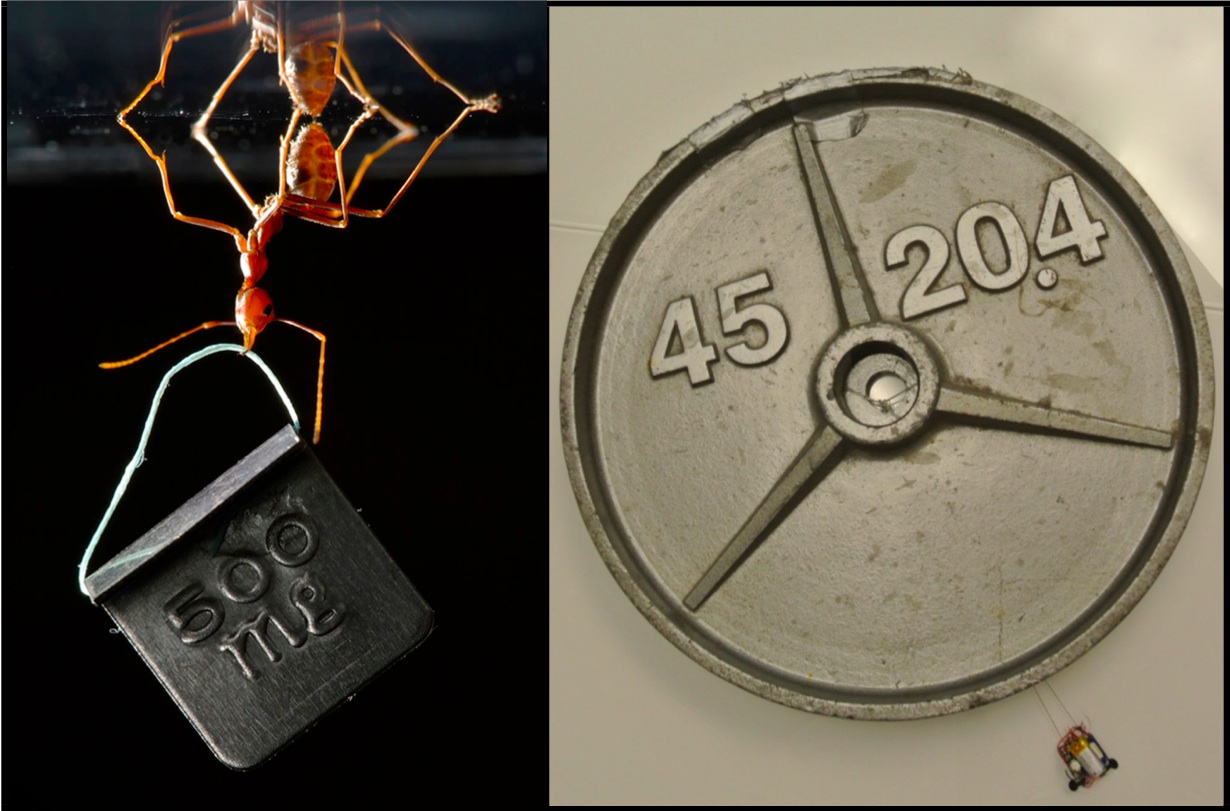How many robots do you need to drag a whale?
Scientists have created a miniature robot that can drag a mass exceeding his own 2000 times.

Another highlight of robotics from scientists from Stanford. This time, the developers from the Biomimetics and Dextrous Manipulation Lab managed to create a 12 gram MicroTug robot, which can drag an object 2000 times its body weight. It’s the same as harnessing a man to pull a blue whale on the ground.
More precisely, the robot is capable of delivering 40 Newton when moving an object on a flat surface. Many of you might think that the developers have spied the principle of action on the ant. But no! When creating the robot, scientists took as a basis the structure of the gecko's paw, which is famous for its sticky fingers.
To move objects MicroTug uses a controlled adhesive material, due to which it adheres to the surface during traction. Then the bot pushes the load towards itself with small jerks to reduce energy consumption. With such translational movements, the small tug pulls out more than any insect. For comparison: an ant can lift a thing 100 times its own weight (10N) and drag something 30 times heavier than itself.
To break insect records, the developers also created a MicroTug modification that can lift objects on a steep surface. Namely, the 9-gram model of the “crane operator”, pulling a weight 100 times its own. It’s almost as if Tom Cruise from Mission Impossible 4 was dragging an elephant along the steep surface of a skyscraper.

While the tugboats are too small to be used in industry or transport, he will drag a cup of morning coffee without any problems.

Another highlight of robotics from scientists from Stanford. This time, the developers from the Biomimetics and Dextrous Manipulation Lab managed to create a 12 gram MicroTug robot, which can drag an object 2000 times its body weight. It’s the same as harnessing a man to pull a blue whale on the ground.
More precisely, the robot is capable of delivering 40 Newton when moving an object on a flat surface. Many of you might think that the developers have spied the principle of action on the ant. But no! When creating the robot, scientists took as a basis the structure of the gecko's paw, which is famous for its sticky fingers.
To move objects MicroTug uses a controlled adhesive material, due to which it adheres to the surface during traction. Then the bot pushes the load towards itself with small jerks to reduce energy consumption. With such translational movements, the small tug pulls out more than any insect. For comparison: an ant can lift a thing 100 times its own weight (10N) and drag something 30 times heavier than itself.
To break insect records, the developers also created a MicroTug modification that can lift objects on a steep surface. Namely, the 9-gram model of the “crane operator”, pulling a weight 100 times its own. It’s almost as if Tom Cruise from Mission Impossible 4 was dragging an elephant along the steep surface of a skyscraper.

While the tugboats are too small to be used in industry or transport, he will drag a cup of morning coffee without any problems.
